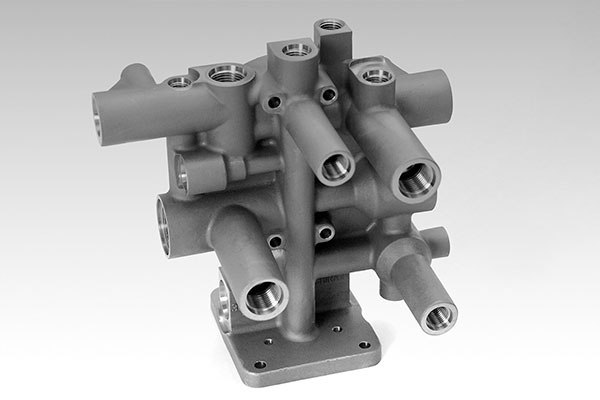Precision investment casting remains a cornerstone technology for manufacturing complex, high-performance components in aerospace applications. This paper explores its implementation across superalloys, titanium alloys, aluminum alloys, and magnesium alloys while analyzing emerging trends through computational modeling and hybrid manufacturing approaches.
Material Systems and Process Optimization
The selection of alloy systems directly determines component performance in extreme environments. Table 1 compares critical properties of aerospace casting alloys:
| Alloy Type | Density (g/cm³) | Service Temp. (°C) | Typical UTS (MPa) |
|---|---|---|---|
| Ni-based Superalloys | 8.2–8.9 | ≤1200 | 750–1450 |
| Ti-6Al-4V | 4.43 | ≤600 | 895–930 |
| A357 Al | 2.68 | ≤200 | 310–365 |
| WE43 Mg | 1.84 | ≤250 | 250–275 |
The solidification kinetics of these alloys follows modified Chvorinov’s rule for thin-wall castings:
$$ t_f = k \left( \frac{V}{A} \right)^n $$
Where \( t_f \) = solidification time, \( V \) = volume, \( A \) = surface area, and \( n \) = empirical constant (1.3–1.6 for aerospace alloys).

Advanced Superalloy Components
Modern turbine blades employ directional solidification techniques with thermal gradient control:
$$ G = \frac{\Delta T}{\delta} $$
Where \( G \) = thermal gradient (30–100°C/cm), \( \Delta T \) = temperature difference, and \( \delta \) = mushy zone thickness. Typical process parameters for DS superalloys include:
| Parameter | Value Range |
|---|---|
| Withdrawal Rate | 3–7 mm/min |
| Melt Superheat | 150–200°C |
| Shell Preheat Temp. | 1500–1550°C |
Hybrid Manufacturing Approaches
The integration of additive manufacturing with precision investment casting enables rapid prototyping of complex cores:
$$ R_a = \sqrt{R_{a,cast}^2 + R_{a,AM}^2} $$
Where \( R_a \) = combined surface roughness. Typical hybrid process sequences include:
- 3D printed sacrificial patterns
- Additive-assisted shell fabrication
- Integrated cooling channel formation
Computational Process Modeling
Multiphysics simulations optimize feeding systems using Navier-Stokes equations:
$$ \rho \left( \frac{\partial \mathbf{v}}{\partial t} + \mathbf{v} \cdot \nabla \mathbf{v} \right) = -\nabla p + \mu \nabla^2 \mathbf{v} + \mathbf{f} $$
Recent developments in machine learning enable real-time parameter adjustment through:
$$ \theta_{opt} = \argmin_{\theta} \sum_{i=1}^N (y_i – f(x_i,\theta))^2 $$
Where \( \theta \) represents process parameters and \( f \) the quality prediction model.
Future Technology Roadmap
The evolution of precision investment casting focuses on four key areas:
| Focus Area | 2025 Target | 2030 Target |
|---|---|---|
| Automation Level | 60% Process Automation | Full Digital Twin Integration |
| Material Utilization | 85% Yield Rate | 95% Yield Rate |
| Feature Resolution | 200 μm Wall Thickness | 50 μm Micro-features |
| Multi-material Casting | Bi-metallic Components | Functional Graded Structures |
Continued advancement in precision investment casting will rely on synergistic development of novel alloy systems, intelligent process control, and hybrid manufacturing architectures to meet aerospace industry demands for complex, high-performance components.
